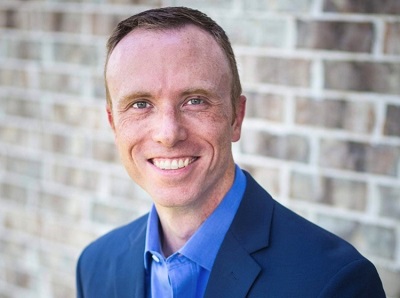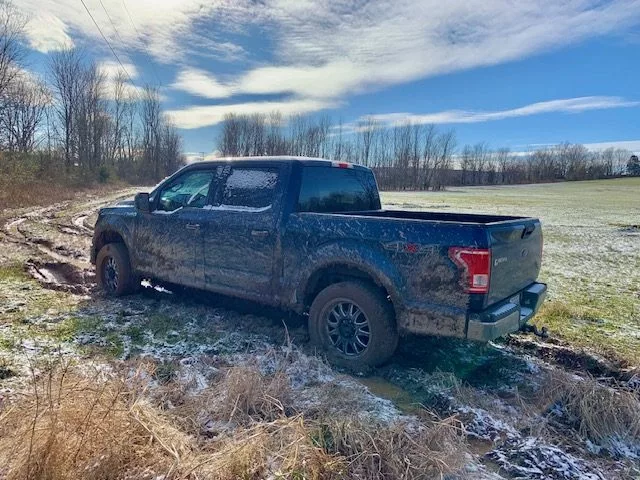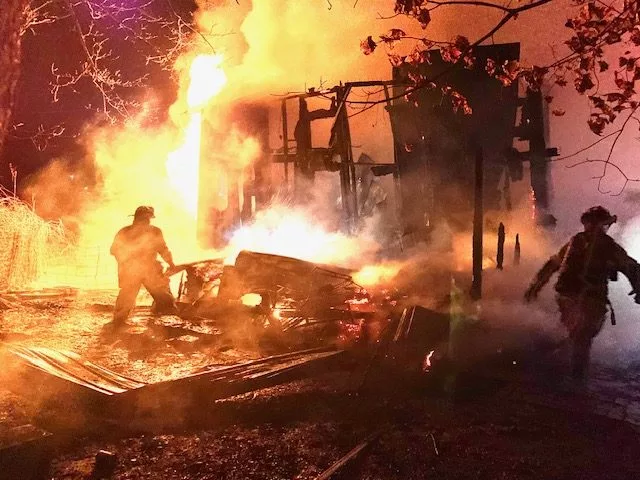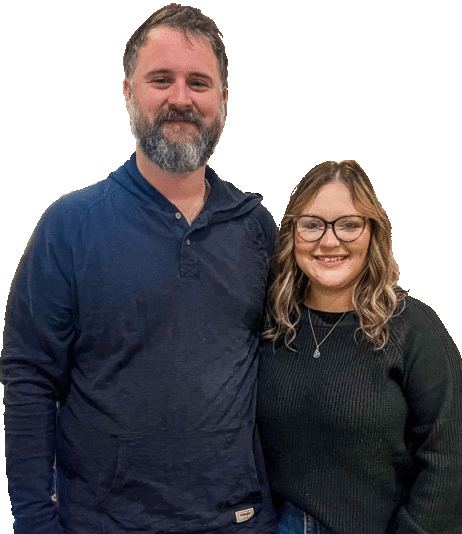
A Grayson County native and NASA testing specialist has been featured in a new article in Forbes magazine.
Jordan Lindsey, who works for NASA as an Integrated Testing Specialist (ITS) via the Aerospace Corporation, was quoted at length in the Forbes article on the research being done to improve the safety and durability of the gloves astronauts wear in space, as NASA eyes a manned mission to Mars.
Lindsey has worked as a subcontractor for NASA since 2005 when he was hired as a Project Engineer where he worked on the Space Shuttle Fleet’s Main Propulsion System in Cape Canaveral, Florida. He then was promoted to a ROBOTICS Flight Controller at the Johnson Space Station in Houston, Texas.
He was again promoted, this time to Flight Controller, at the Johnson Space Station before becoming an Aerospace Engineer, also working out of the Johnson Space Station.
In 2019, the former Dog Creek resident and Grayson County High School alum, entered his current position as an ITS where he aids “the development of the next generation of space suits to take humans to the moon, Mars and beyond,” he said.
Lindsey’s brother, George Lindsey, is one of the most acclaimed disc jockeys and radio operations managers in the country. He has worked at 100.3 The Bull in Houston since 2015. From 1999 to 2015, he oversaw all programming for five Louisville radio stations: WDJX, WGZB, WESI, WMJM and WXMA.
The Lindseys’ sister, Charlotte Lindsey Crume, works in management at Midway Pharmacy.
Below is the full Forbes article:
Microsoft And NASA Leverage AI To Streamline Safety In Space
By Tony Bradley
The star-filled expanse of space seems calm and peaceful from a distance—but the reality is that outer space is a harsh and unforgiving environment. Astronauts are relatively safe while onboard a spacecraft or the International Space Station (ISS), but there is a need to venture out to make repairs or modifications every once in a while. When astronauts perform extra-vehicular activities or EVAs—more commonly referred to as a spacewalk—the spacesuit they wear is the only thing separating them from extreme temperatures and inhospitable radiation, so it is a matter of life and death to ensure the integrity of the spacesuit. Microsoft and HPE have partnered with NASA to leverage artificial intelligence (AI) for performing crucial inspections of the spacesuit gloves.
Spacesuit Glove Wear and Tear
The integrity of the entire spacesuit is crucial, but the part that gets the most wear and tear and is most likely to experience issues is the gloves. When astronauts conduct spacewalks, sharp edges on handrails can cause rips and cuts, and as they work with tools and equipment, the area between the thumb and index finger is vulnerable to damage.
A blog post from Microsoft explains, “Astronaut gloves have five layers. The outer layer consists of a rubberized coating that provides grip and acts as the first layer of defense. Next comes a layer of a cut-resistant material called Vectran®. The additional three layers maintain the suit’s pressure and protects against the temperature extremes in space – which can range anywhere from 180 degrees Fahrenheit to 235 degrees Fahrenheit.”
Inspecting Spacesuit Gloves
I had an opportunity to speak with a team from NASA that is working on this issue. Jordan Lindsey is an Integrated Testing Specialist, and he works in the Extravehicular Activity and Human Surface Mobility Program at the Johnson Space Center in Houston. Lindsey explained that the existing glove inspection process has been in place for 20 years at NASA.
“The crew, after a spacewalk, will take a set of photos, and it’s a very prescribed way of doing it. There’s a procedure in place for the crew to take those photos. Those photos then get downlinked to the ground, and then a team of ground experts take a look at those and decide, “Are those gloves good or can they be used again, or no?” and the crew has to go to a backup pair of gloves.”
The process has sufficed so far, but Lindsey and a colleague began to ponder the question of how the glove inspection process will work as we move away from the ISS and spacecraft in low-Earth orbit and travel farther out to the Moon, or to Mars, and beyond.
The Microsoft blog post points out, “From Mars, it will take up to 20 minutes to say “hello” to someone on Earth, and another 20 minutes for someone on Earth to say “hello” back. That means it could take a total of at least 40 minutes to determine if an astronaut’s glove checks out – which is simply too long to wait.”
Automating Glove Inspection with AI/ML
Martin Garcia, a computer engineer working in the Office of the Chief Information Officer for Artificial Intelligence and Machine Learning at the Johnson Space Center, is a driving force behind integrating AI and ML at NASA. He shared that he received some funding from the digital transformation team and set out with a goal to onboard Microsoft Azure and Microsoft’s AI/ML tools. The initial performance and security checks passed with flying colors, so the next step was to identify a project to put those tools to the test.
“I was looking at a lot of proposals, and one came across my desk, which happened to be the glove inspection project, which I instantly fell in love with. I thought, “This is mission-orientated, and there’s a lot of value to come from it.” So now we’re here. We’ve gotten to the point where in under a year from concept to deployment—we’ve done it in one year, less than one year—we have deployed on the ISS not once, but twice. So we’re very excited about it.”
The “here” Garcia is referencing is that his team has worked with Microsoft and HPE to develop a working model to automate the glove inspection process using AI and ML. Part of what enabled such rapid progress and results is that the team already had an existing data set.
Lindsey shared that they were able to use the historical database of photos from previous missions. “There were somewhere between 2000 and 3500 original images taken from each of those previous EVAs that helped construct the International Space Station. We use that as our initial training data set.”
Along with the images, NASA also had a record of the reports that went with each inspection. That allowed them to identify areas of concern and help train the ML on known good and known bad glove images. To expand the data set, they also modified and manipulated the images—rotating them 90 degrees, blurring out portions, flipping them, etc. to build a larger library and ensure the training of the ML was as comprehensive as possible.
The project is still in a research and development phase. While they have been able to deploy on the ISS twice and conduct tests of the AI / ML model, the traditional process is still the one astronauts are actually using and relying on. The team is simply piggybacking alongside and using the same images the crew is sharing with NASA, which lets them test the system in a real-world environment and compare the findings and assessment of the AI against the conclusions from the human analysts at NASA.
Microsoft and HPE
Microsoft and HPE are providing the processing power and AI platform for NASA to perform the glove inspections onboard ISS. Microsoft and HPE have worked with NASA to develop the Spaceborne Computer-2. This computer onboard the ISS enables astronauts to process data at the extreme edge—227 miles above the planet—to deliver analysis and insight in minutes instead of months.
“NASA is incredibly intentional about who it talks about partnerships with, so we’re pretty excited to be able to share the work we’re doing with NASA,” proclaimed Tom Keane, Corporate Vice President of Azure at Microsoft.
I have spoken previously with Keane about the work Microsoft is doing in space in terms of connectivity and analysis. This latest news is about the developers—and expanding and enhancing the things developers can do from space.
Keane told me, “The way I describe it is Azure Orbital—which is our space technology—I describe that as our cloud fabric in space. I think a year ago, I was talking about space as an edge scenario. It’s absolutely that, but as the connectivity continues to grow, it’s permanently connected and it really is a cloud fabric that’s running on orbit.”
Keane stressed that Microsoft is not a “space company.” He explained that what makes Microsoft unique is its focus on partnership with the objective of building the technologies that all of the other companies can use to build their solutions. “We’re a technology company that powers a bunch of space companies.”
To Infinity, and Beyond
With visions of a manned Mars mission on the horizon, there is a limited timeline to get these things operational, but it is still fairly early in the process. Thankfully, the progress looks promising.
For now, this project is still R&D. NASA will continue to test the glove inspection AI in tandem with the existing manual process. There is no specific schedule for switching over. They plan to continue moving forward with this initiative with the eventual goal of operationalizing the technology. At the same time, Garcia and his team are also exploring additional opportunities to incorporate AI and ML to streamline operations and support the mission—both in the short term and as we embark to Mars and beyond.
Keane summed it up nicely. “The reason that space is so exciting is you look at a lot of these scenarios and how technology can completely change them. Then you look at the foundation on which you’re building and the vintage of it. And there is absolutely, some pretty amazing possibilities as more digital technology comes into these space scenarios to completely reinvent and rethink how things are done. And I think we’re very early in that modernization, if you like, of space. I really think we’re just beginning.”
By Ken Howlett,News Director
Contact Ken at ken@k105.com








